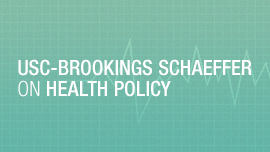Health information technology (IT) holds the potential to enable higher-quality, lower-cost health care and has been a major focus of federal health care policy. Formed by executive action in 2004, the Office of the National Coordinator for Health IT soon received Congressional support with the goal of achieving widespread use of health IT within a decade. As part of the 2009 American Recovery and Reinvestment Act, Congress enacted the Meaningful Use (MU) program to provide financial incentives to accelerate EHR uptake and other health IT tools, including more timely access for patients to their personal health information.
To date, the MU program been successful in leading to substantial adoption of EHRs by health care providers across the United States, with approximately half of US providers now using an EHR that is MU certified. MU has also been credited as being largely responsible for the rapid adoption of e-prescribing and the increased use of health information exchanges. However, the promise of health IT has not yet been fulfilled. Despite progress on adoption, many providers do not believe that certified EHRs have significantly reduced their practice burden. Similarly, MU has been criticized by providers for its reliance on a general set of specific mandatory functions and workflows that define data collection and EHR capabilities in a way that may not be a good fit with their most pressing practice needs. Providers have also complained of excessive costs associated with clinical interoperability.
Most of the current health IT conversation has been directed at the cost of information exchange. However, while this important barrier needs resolution, we are concerned other structural problems may prevent health IT tools and strategies from being used effectively to support high value care. Here, we summarize a few key challenges that many providers and health care professionals continue to face as they work to succeed in an increasingly value-based care environment.
Addressing key challenges
Uniformity of requirements: The MU and the EHR certification programs have largely relied on a specific set of requirements and process measures for all providers, regardless of specialty or scope of practice. In some areas, such as e-prescribing capabilities, MU has helped to give providers more certainty around health IT adoption decisions, since applications in certified EHRs must contain a specific, clear set of minimum functionalities.
However, this uniform approach is not always a good fit for the diverse realities of clinical care, which are likely to benefit from quite different health IT functionalities and tools based on specialty and scope of practice. For instance, a provider caring for patients with chronic diseases may require detailed and longitudinal information, while a cosmetic surgeon does not. With uniform standards, the “informationalist” clinician may feel that the EHR is underpowered for their patient management needs, whereas the “proceduralist” might feel that the EHR is too cluttered and is not designed to fit their needs.
Specific, process-driven measures: Prior to the MU program, many EHRs were developed mainly for documentation and coding. Others, particularly those used in select academic medical centers, were extremely sophisticated and built to optimize workflow and quality objectives within the center. Given this varied EHR environment, the prescriptive approach of the early stages of MU was paramount in creating a core set of valuable functionalities and thus helped increase provider adoption.
However, as MU certification requirements increased many AMCs had to abandon their usable “home grown” EHRs in favor of commercial EHRs that were MU certified. Some of these AMCs and other providers have complained about their ability to effectively use these new MU-certified products. In general, software usability improves with efforts towards “user-centered design”, a software design principle that places end-user perceptions and needs at the forefront. In contrast, many believe that the MU certification program is a root cause of limited usability since it focuses on MU-required designs rather than on provider-driven workflows. While “Stage 3” of the MU program aims to focus on outcomes, the earliest that Stage 3 will start is 2017, and the pathway for shifting from health IT process measures to relevant outcome measures is not yet clear.
Failure to prioritize access to accurate, actionable information related to coverage and payment: The current set of specific, prescriptive provider and hospital workflows as defined by MU has not enabled broad access to timely, accurate, and actionable information on coverage and payment. This can be attributed to a lack of key information inside or integrated with the EHR that reflects patient cost and health insurance coverage. Without this information, patients and providers must go beyond their EHR systems to get the information they need to make informed decisions about the testing and treatment. As a result, many testing and treatment decisions may be unnecessarily costly, or delayed or denied, thus leading to frustrations and missed opportunities for patients and providers to achieve better care.
Gaps in practical and effective interoperability: Even where information is captured in the EHR and exportable using existing interoperability standards, health plans, insurance companies, and employers often do not accept information in these standard formats, and additionally require duplicative documentation. For instance, the current proposed operating rules for prior authorization of referrals and treatments do not consider electronic transmissions of content or attachments – items that are integral for most prior authorizations. And worse, the current vision for this administrative interoperability is not based on leveraging what is possible today with MU-certified EHRs or more state-of-the-art pathways for clinical interoperability such as FHIR (Fast Healthcare Interoperability Resources), but rather by requiring unique and duplicative documentation into a separate administrative system. Instead of focusing on incentives for exporting data, an alternative approach may be to support real business cases for practical interoperability – including more emphasis on relevant payment-related information. Such a refocusing on business cases could improve usefulness and interoperability without the need for such complex process measures and detailed standard design requirements.
Key questions: What should be next for federal health IT policy?
In our upcoming event, we will address the challenges for achieving more effective use of health IT and interoperability to improve care, particularly in light of trends toward more value-focused health care payments and other challenges facing health care providers. Key questions include:
- What are the greatest unfulfilled opportunities for health IT tools and strategies to support better care, lower costs, and less administrative burden?
- What changes in payments, including both new payment models and changes in Meaningful Use incentives, have the most potential to support more effective use of health IT to improve care and lower costs?
- In light of the recent Interoperability Roadmap for Health IT, what are the most important next steps in Federal policies to promote meaningful interoperability across health IT systems?
To learn more, register for the Engelberg Center’s March 4 event: Can forces align to use health IT to improve care and lower costs? Panelists will discuss challenges to advancing effective use of health IT, new initiatives underway, and recommendations to improve the MU program and spur health IT interoperability.
Editor’s note: The authors also acknowledge Pratyusha Katikaneni for her research and editorial support.
The Brookings Institution is committed to quality, independence, and impact.
We are supported by a diverse array of funders. In line with our values and policies, each Brookings publication represents the sole views of its author(s).



Commentary
Making health IT more ‘meaningful’ in a value-based care environment
March 3, 2015